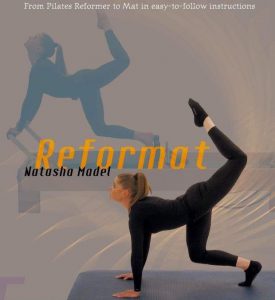Introduction:
Are you new to Pilates and eager to start practicing at home? Pilates offers a fantastic way to improve flexibility, strength, and overall fitness without needing fancy equipment or a gym membership. In this comprehensive guide, we’ll walk you through everything you need to know to begin your Pilates journey in the comfort of your own home.
Step 1: Understand the Basics of Pilates
Before diving into the exercises, it’s essential to grasp the foundational principles of Pilates:
- Control: Each movement should be precise and controlled.
- Breathing: Focus on deep, mindful breathing throughout the exercises.
- Alignment: Maintain proper posture and alignment to prevent injury.
- Core Engagement: Pilates emphasizes core strength; engage your core muscles in every exercise.
Step 2: Set Up Your Pilates Space
Create a dedicated area in your home where you can comfortably practice Pilates:
- Use a yoga mat or a soft surface for exercises.
- Ensure there’s enough space to stretch your arms and legs without obstacles.
- Natural light and good ventilation can enhance your practice environment.
Step 3: Warm-Up Routine
Begin with a gentle warm-up to prepare your body for exercise:
- Start with 5-10 minutes of light cardio (e.g., marching in place or gentle jumping jacks).
- Perform dynamic stretches such as arm circles, leg swings, and torso twists to loosen muscles.
Step 4: Essential Pilates Exercises for Beginners
Here are some fundamental Pilates exercises that are perfect for beginners:
- The Hundred: Lie on your back, lift your legs, and pump your arms for 100 beats.
- The Roll-Up: Strengthen your core by rolling up and down from a lying position.
- Single Leg Circles: Improve hip mobility and core stability with controlled leg movements.
- The Plank: Engage your entire body in a straight-arm plank position to build core strength.
Step 5: Cool Down and Stretching
Finish your Pilates session with a cooldown and stretching routine:
- Perform gentle stretches targeting major muscle groups used during Pilates.
- Focus on deep breathing and relaxation to promote recovery.
Step 6: Progressing in Your Pilates Practice
As you become more comfortable with the basics, consider these tips for progressing:
- Increase the number of repetitions or duration of each exercise.
- Explore intermediate Pilates exercises to challenge yourself further.
- Consider joining a virtual Pilates class or using online resources for guided sessions.
Conclusion:
With dedication and consistency, Pilates can become a rewarding part of your fitness routine. By following this step-by-step guide, you’re well-equipped to start practicing Pilates at home as a beginner. Remember to listen to your body, focus on proper form, and enjoy the journey of improving your strength and flexibility through Pilates.
Ready to begin your Pilates journey at home? Gather your mat, find a quiet space, and start with these beginner-friendly exercises today. Your body will thank you for it! click the link https://classicalpilates.co.za/product/unlocking-reformer-pilates-on-the-mat/ to purchase your manual to help you with your home practice.




